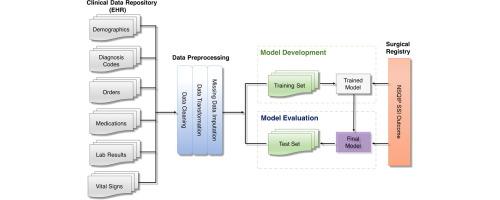Strategies for handling missing clinical data for automated surgical site infection detection from the electronic health record |
| |
| Affiliation: | 1. Institute for Health Informatics, University of Minnesota, Minneapolis, MN, USA;2. Department of Surgery, University of Minnesota, Minneapolis, MN, USA;3. Department of Medicine, University of Minnesota, Minneapolis, MN, USA |
| |
| Abstract: | 
Proper handling of missing data is important for many secondary uses of electronic health record (EHR) data. Data imputation methods can be used to handle missing data, but their use for analyzing EHR data is limited and specific efficacy for postoperative complication detection is unclear. Several data imputation methods were used to develop data models for automated detection of three types (i.e., superficial, deep, and organ space) of surgical site infection (SSI) and overall SSI using American College of Surgeons National Surgical Quality Improvement Project (NSQIP) Registry 30-day SSI occurrence data as a reference standard. Overall, models with missing data imputation almost always outperformed reference models without imputation that included only cases with complete data for detection of SSI overall achieving very good average area under the curve values. Missing data imputation appears to be an effective means for improving postoperative SSI detection using EHR clinical data. |
| |
| Keywords: | Electronic health records Surgical site infections Missing data |
| 本文献已被 ScienceDirect 等数据库收录! |
|

